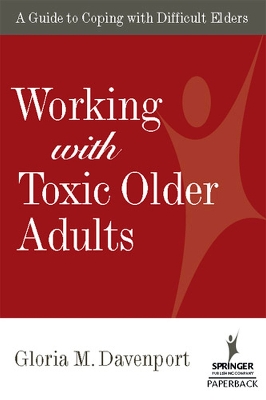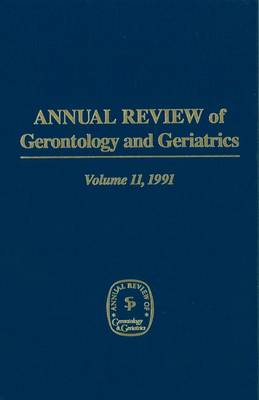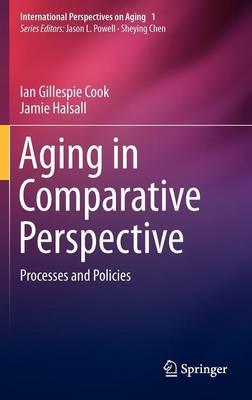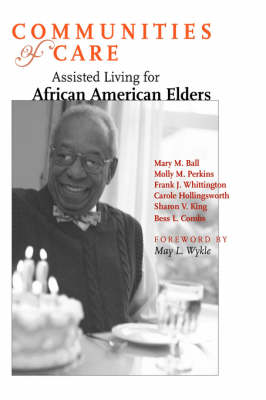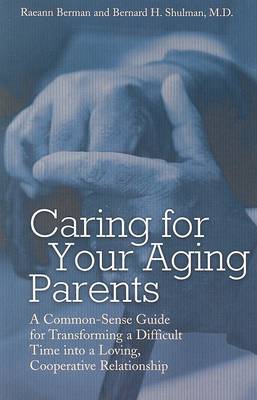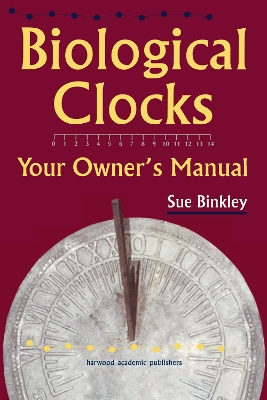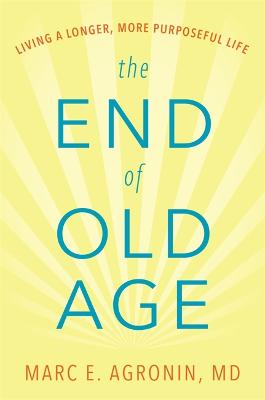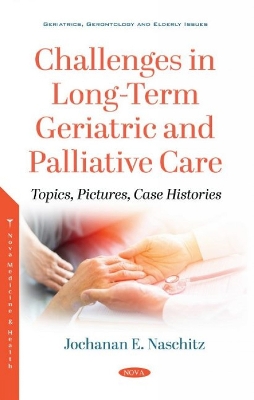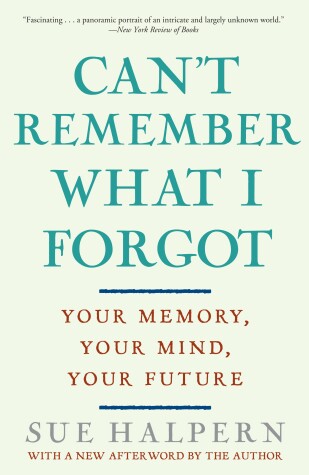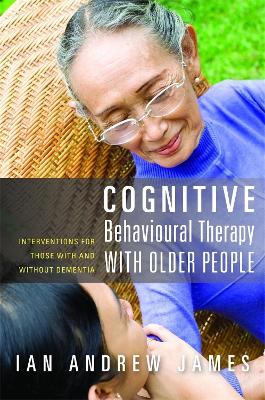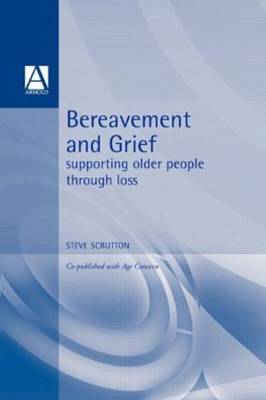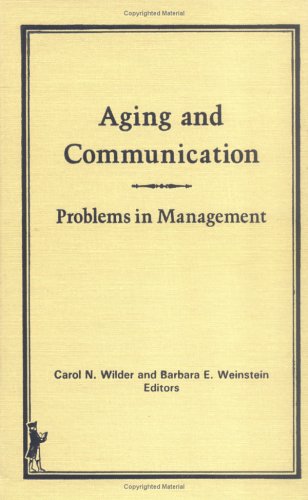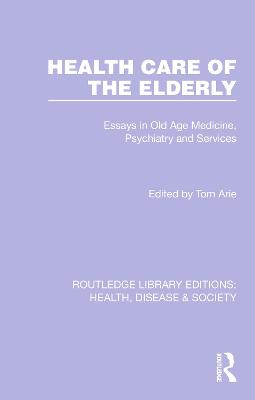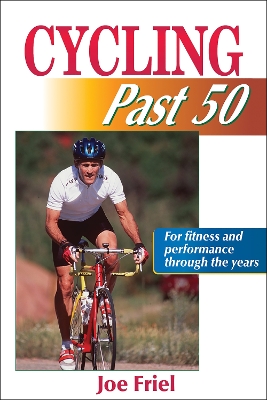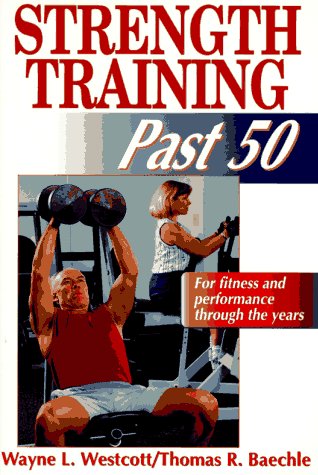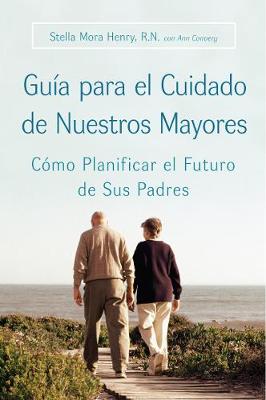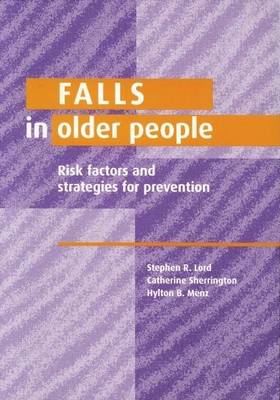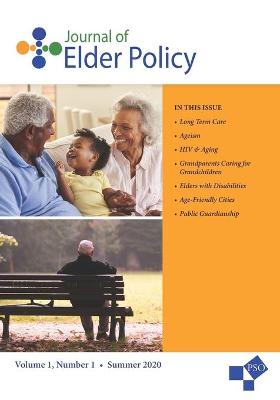Older adults, like all individuals, have different personalities and temperaments. According to Dr. Davenport, toxicity in older adults manifests itself in negative behaviors and attitudes that can adversely impact interactions with health professionals, caregivers, and family members. Davenport presents theories and case examples to help us understand this phenomenon and provides useful techniques for caring for toxic elders.
Annual Review Of Gerontology And Geriatrics, Volume 11, 1991
""Overall this issue is well organized and informative, a welcome addition to research literature available in the field of aging."" - Educational Gerontology: Learning Resources
Aging in Comparative Perspective (International Perspectives on Aging, #1)
by Ian Gillespie Cook and Jamie Halsall
This book examines the key aging processes in seven countries (United States, United Kingdom, Sweden, Japan, China, Nepal, and South Africa) and the main policies that have been, and are being, developed to deal with this rapid change in the demographic profile. It addresses the problems that are identified as well as the positive aspects of aging within each of these contrasting societies. Thus it makes a significant contribution to the major debates about growing old across the globe.
Communities of Care
by Mary M. Ball, Molly M. Perkins, Frank J. Whittington, Carole Hollingsworth, Sharon V. King, and Bess L. Combs
Very little is known about why and when African American elders seek formal long-term care, or about the characteristics of assisted living environments they consider most desirable. Drawing on qualitative studies conducted between 1998 and 2001, the authors of Communities of Care provide important information on historic and current trends in assisted living systems serving African Americans. Focusing on six facilities that have become models of long-term care for African Americans, the autho...
Caring for Your Aging Parents
by Raeann Berman and Bernard H Shulman
Biological Clocks introduces the subject of human chronobiology. It describes biological clocks; why we have clocks; how biological clocks relate to sleep disorders, depression, and jet lag; and how the reader can measure his/her own rhythms.
In his last book, How We Age, Dr. Marc Agronin wrote passionately about how we need to place greater value on our elders and hope for a better old age, even in the throes of illness and dementia. But he doesn't want us to simply gaze at the holiness of old age, nor does he want us searching for some magical Fountain of Youth that doesn't exist now and won't exist in the foreseeable future. Nearly every other book on the market takes these approaches, and the messages are predictable, tiresome, a...
Aging Research in Yeast (Subcellular Biochemistry, #57)
This volume includes contributions by the leading experts in the field of yeast aging. Budding yeast (Saccharomyces cerevisiae) and other fungal organisms provide models for aging research that are relevant to organismic aging and to the aging processes occurring in the human body. Replicative aging, in which only the mother cell ages while the daughter cell resets the clock to zero is a model for the aging of stem cell populations in humans, while chronological aging (measured by survival in st...
Challenges in Long-Term Geriatric and Palliative Care
by Jochanan E Naschitz
Practice guidelines for management of conditions prevalent in long-term geriatric care are based, by and large, on expert consensus and rarely on controlled studies. Though enforced by tradition, some of the rules often applied in clinical practice fall short of scientific foundation. In lacking high-grade scientific evidence, geriatric practice might benefit from an evidence-balanced approach. A step forward in this direction is by corroboration of observational data. In this book, we brought o...
Behind the Scenes of Cutting-Edge Memory Research When Sue Halpern decided to emulate the first modern scientist of memory, Hermann Ebbinghaus, who experimented on himself, she had no idea that after a day of radioactive testing, her brain would become so “hot” that leaving through the front door of the lab would trigger the alarm. This was not the first time while researching Can’t Remember What I Forgot that Halpern had her head examined, nor would it be the last. Like many of us who have had...
Bis Mitte dieses Jahrhunderts werden voraussichtlich mehr als 115 Millionen Menschen an Demenzerkrankungen leiden - eine enorme Herausforderung fur die Gesellschaft. Bereits heute wird deutlich, mit welch schwierigen Fragen Angehoerige sowie Fachleute aus Medizin und Pflege im Umgang mit Demenzkranken konfrontiert sind: Wie urteilsfahig sind die Betroffenen? Wie respektiert man Menschen mit schwindender Autonomiefahigkeit? Welche medizinischen und pflegerischen Optionen stehen zur Verfugung? Wie...
Cholinergic Mechanisms
Providing a cutting-edge profile of research progress in this important field of study, Cholinergic Mechanisms: Function and Dysfunction contains a compilation of the proceedings of the Eleventh ISCM, held in St. Moritz, May 2002. Bringing together 250 contributors from 30 countries, the book presents a comprehensive picture of the cholinergic field. It provides a survey of current understanding of molecular, pharmacological, toxicological, behavioral, and clinical aspects of the cholinergic sy...
The development of 'ageless' mental health services means that an increasing number of clinicians are now required to work with older people. Cognitive Behavioural Therapy is recognised by all recent meta-analyses as the most effective therapy, yet few clinicians are trained specifically in its usage with the elderly. This book is a detailed guide to using CBT with older people both with and without cognitive difficulties. Reviewing its use in different settings, it covers both conceptual and pr...
Provides advice and support for professional bereavement counsellors, outlining the areas and issues which could be addressed when counselling older people. It suggests ways in which certain matters could be handled and covers all types of bereavement.
A very useful overview of communication problems in the elderly, with discussions of management techniques and delivery systems.
Health Care of the Elderly (Routledge Library Editions: Health, Disease and Society)
Originally published in 1981 and edited by a pioneer in psychogeriatric services, this book spans medicine, psychiatry, social work and organisation of services of the elderly, written by eminent authors from several different professions. Chapters include those on stroke rehabilitation, dementia, neurosis, psychotherapy for the elderly and institutional care, among others. The book discusses many issues which remain as pertinent today as when it was first published, not least the problems of pr...
Conventional wisdom says that middle-aged cyclists should slow down and expect to achieve less as they grow older. But in Cycling Past 50, author Joe Friel shows cyclists that with proper training and the right attitude, the years after 50 can be their best ever. Written for cyclists of all types-road riders, mountain bikers, track racers-this book provides an in-depth look at the full range of considerations for cycling successfully into and through middle age. Joe Friel, a writer and contri...
Strength Training Past 50 (Ageless Athlete S.)
by Wayne L. Westcott and Thomas R. Baechle
Explains and shows the most effective way for mature adults to maintain muscle, reduce body fat, increase bone density, lower blood pressure, and reduce arthritic pain through strength training.
Guia Para El Cuidado de Nuestros Mayores
by Stella Henry and Ann Convery
Falls in Older People: Risk Factors and Strategies for Prevention
by Stephen R Lord, Catherine Sherrington, and Hylton B Menz
